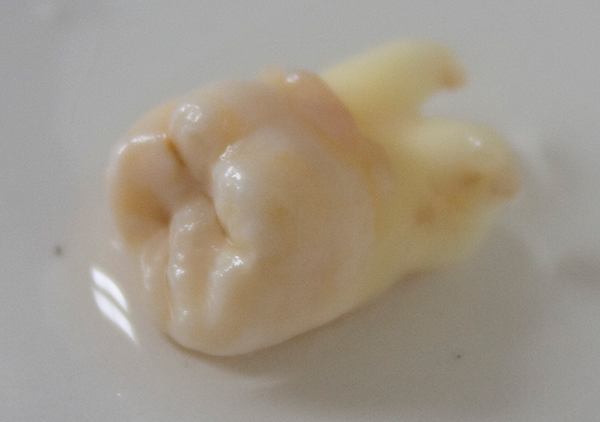One of the complications associated with wisdom teeth removal is the accidental displacement of the wisdom tooth. This has been discussed in the post Computer Assisted Retrieval of Accidentally Displaced Wisdom Teeth and as a complication over at http://www.teethremoval.com/complications.html. There are many places in the human body a wisdom tooth can end up in accidentally during surgery such as the maxillary sinus, submandibular space, sublingual space, infratemporal fossa, lateral pharyngeal space, and pterygomandibular space. In an article titled “Accidental displacement of third molars; report of three cases, review of literature and treatment recommendation” written by Anand and Patel appearing in Oral Surgery in 2013 (vol. 6, pp. 2-8) a discussion is made of three cases of displacement of a wisdom tooth during tooth extraction along with treatment recommendations.

In the article the authors describe the most common sites of displacement of a wisdom tooth as being in the maxillary sinus or the submandibular space. They also say that excessive force with elevators and incorrect surgical technique are the most common reasons for displacement. They outline a protocol that they recommend be followed in cases of accidental displacement of a wisdom tooth. First the patient should be informed about what occurred and the possible treatment options. Second, the surgeon may proceed with the retrieval on the same day if they are experienced and if the patient is physically and emotionally up for it. Otherwise the retrieval procedure should be postponed to a later date and done by an oral and maxillofacial surgeon. Third the patient should be given antibiotic, analgesic, and anti-infammatory medications until the second procedure is performed and any active infection or nerve injury should be recorded in the patient record. Fourth the surgeon should localize the tooth or root fragments using x-rays in at least two planes or using cone beam computed tomography and the surgical approach for retrieval should be planed. Fifth when the tooth or root fragment is small (such as one third of a root length or less) and there are no symptoms or active health issues associated with it is possible to leave it in place and monitor over time. The authors state
“The displaced third molar [wisdom tooth] is a rare but potentially serious complication of extraction…It is…of paramount importance to keep all case records, including signed informed consent, radiographs and other items, as well as to inform the patient immediately about any intraoperative accident that occurred… and discuss…to solve the unexpected situation.”
The authors describe the details of three cases of accidental displacement of a wisdom tooth during surgery. In the first case a 28 year old woman had an upper left wisdom tooth displaced into the maxillarly sinus when a dental elevator was being used. After surgical planning using a computed tomography scan a Caldwell-Luc approach was used where the maxillary sinus was irrigated with saline solution and the tooth was removed by negative pressure by a suction pump. The woman made a full recovery. In the second case a 38 year old male had a lower right wisdom tooth displaced into the submandibular space when a dental elevator was being used. After surgical planning using a computed tomography scan a lingual mucoperiosteal flap was raised to allow for an incision that eventually allowed for the tooth to be grasped and delivered using a curved haemostat. The man made a full recovery. In the third case a 28 year old woman had a lower right wisdom tooth removed displaced into the right pterygomandibular space. It was possible to feel the tooth by hand and a lingual mucoperiosteal flap was raised to allow for an incision that eventually allowed for the tooth to be grasped and delivered using a curved haemostat. The woman made a full recovery. It should be noted that in each of these three cases the patients presumably presented to a dental clinic in India and therefore did not have an oral and maxillofacial surgeon perform the extractions but instead just a regular dentist.
